Bob Newton has a few words of warning for potential beekeeping enthusiasts in Tasmania.
“It’s absolutely fascinating and it becomes an obsession,’’ he laughs.
The 71-year-old retired GP from Dodges Ferry started keeping bees at age 15 when he was growing up in Taroona – inspired by a neighbour who was then keeping bees – and the small but mighty creatures have fascinated him since.
With many decades of experience, Newton has become a knowledgeable and well-regarded member of the Tasmanian beekeeping community – he’s a Southern Tasmanian Beekeeping Association committee member, he’s one of very few Tasmanians who successfully breed queen bees for sale, and he’s generous with his time and expertise, appearing as one of the guest speakers who will share information at the Nubeena Bee Festival next weekend.

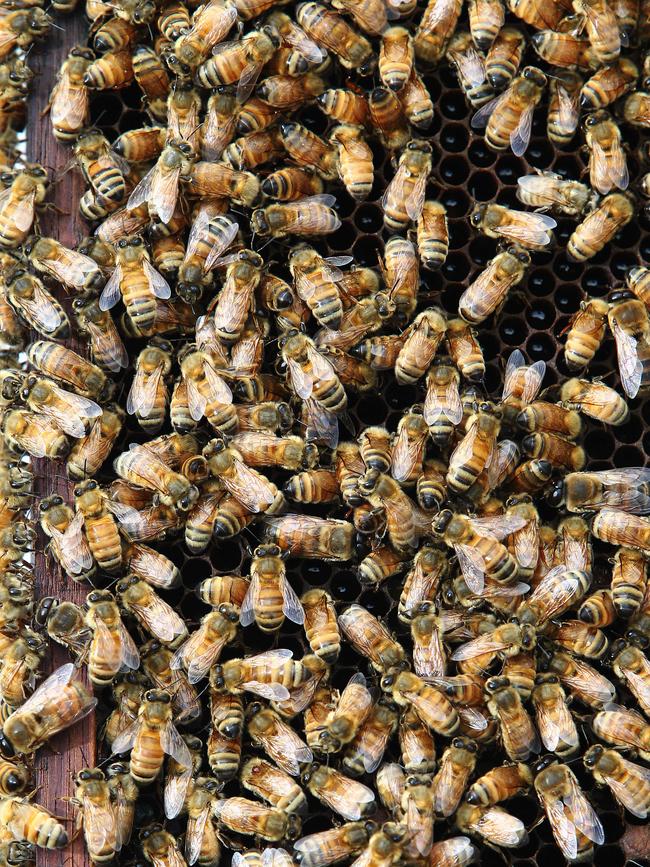
Newton is also part of a team of volunteers providing a first line of defence, keeping the state’s bees safe from pests, including the varroa mite, which has wreaked havoc interstate and around the world.
As a volunteer with Biosecurity Tasmania, Newton helps inspect and maintain guardian hives (also known as sentinel hives), which are located close to major ports across the state, to offer early detection of any pests that may enter Tasmania.
Every six weeks he pours alcohol on half a cup of bees from selected hives across Hobart, which sadly kills the bees, but it enables him to then inspect those bees closely for any signs of varroa mite.
Similar checks are carried out by other beekeepers in Tasmania’s North, North-West and East Coast.
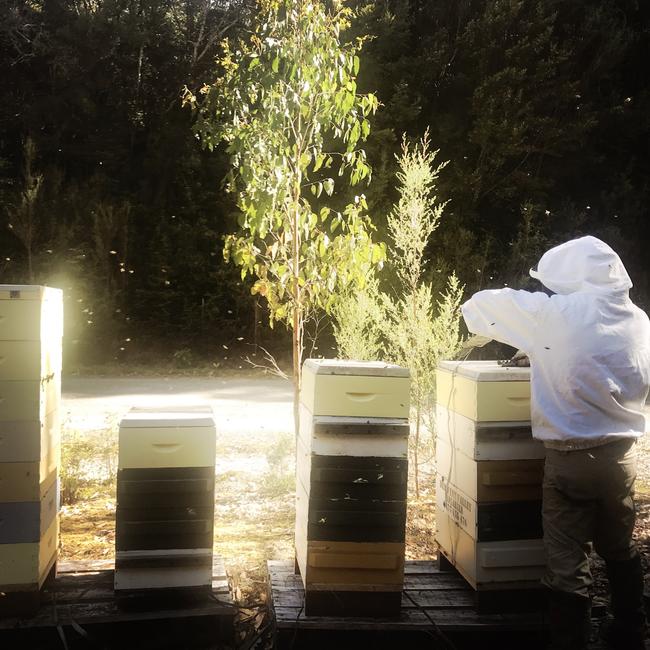
“We check for the presence of varroa in these hives, hoping it hasn’t been an incursion from ships and planes coming into Hobart,’’ Newton explains.
If the pest did arrive in the state, it is hoped early detection would allow for a speedy response to attempt to eradicate it.
The varroa mite is considered to be the most serious pest affecting honey bees worldwide, which in turn threatens global honey and plant industries, which rely on bees for pollination. Until two years ago, Australia was the last major beekeeping country free of this pest, but in June 2022, the varroa mite was detected during a routine check of surveillance hives in Newcastle, in NSW. Despite an extensive eradication program, the pest proved difficult to remove and it has more recently been detected in Victoria.
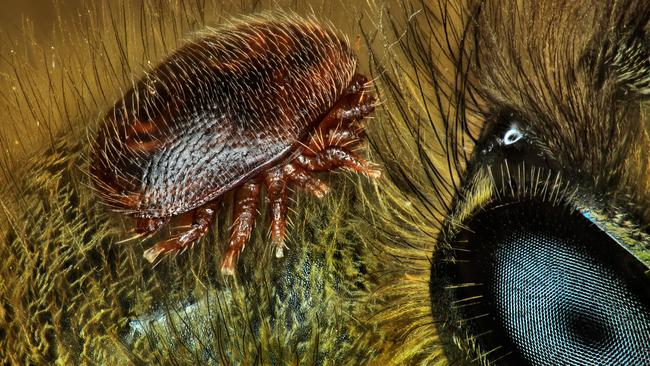
The varroa mite weakens bees, shortens their lives, or causes death by transmitting bee viruses. Heavy varroa mite infestations causes crippled and crawling bees, a reduction in the honey bee population and ultimate colony breakdown and death of the hive. The mites kill bee larva, and also suck the fat stores from healthy bees.
Newton says keeping varroa out of Tasmania is hugely important, not just for the health of bee populations, but for protecting our thriving honey industry, particularly our leatherwood honey production, as Tasmania is the only place in the world where leatherwood is produced.
Traces of pesticides – known as miticides – used to treat varroa mite have been detected in honey in other places where there have been outbreaks, so preventing the pest from entering the state ensures our honey stays as clean as possible.
Attempting to eradicate the pest would also be costly for bee keepers.
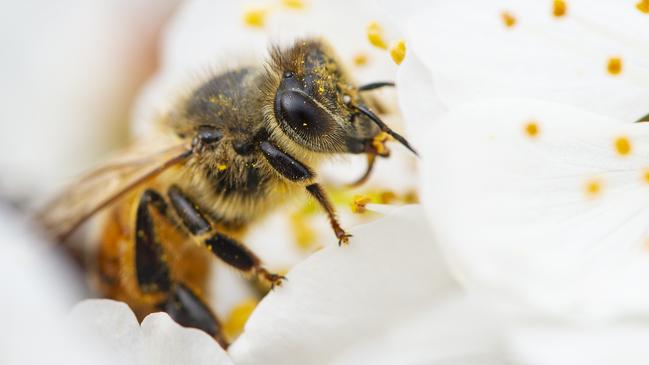
It is estimated that varroa mite in Australia could cost the honey bee industry $70m a year in lost revenue and hives, while the loss to the agricultural and horticultural industries could cost up to $14.2bn annually.
Newton says as a starting cost, Tasmanian beekeepers would be out of pocket at least $40 per hive per year for pesticides alone to kill the mite, which may not sound like a lot. But when you consider that some of our larger beekeepers have hundreds of hives, the cost would quickly add up.
“One keeper with 300 hives estimated it would cost them $12,000 a year to treat varroa,’’ Newton says.

But that doesn’t take into account the wider cost of a varroa outbreak – which has the potential to decimate hives, taint honey (and drive the cost of honey up), and lead to a significant downturn of beekeeping and honey production in the state.
“In New South Wales, since varroa turned up there two years ago, up to a third of professional and hobby beekeepers have just given up beekeeping because of the complexity of dealing with varroa and the costs of managing it,’’ Newton says.
“That’s a scary figure. That’s a significant amount of people who find varroa just too hard to manage.’’
Such a downturn would be a huge step backwards for Tasmania, where interest in beekeeping has steadily grown in recent years.

Go back 15 years, Newton says, and the Southern Tasmanian Beekeeping Association had about 50 registered beekeepers. But that number is now in excess of 350, with numbers constantly increasing.
Figures from the Tasmanian Beekeeping Survey in 2020-21 showed there were 379 registered beekeepers in the state during that time, up 47 per cent from 2018-19, although it is predicted numbers have risen steadily since then.
There were 28,512 registered hives, up 29 per cent from 2018-19.
The survey also showed 1012 tonnes of honey was produced, up 151 per cent from 2018-19, and the farm-gate value of honey was $12.8m, up 74 per cent from 2018-19.
Leatherwood accounted for 76 per cent of honey production and 73 per cent of honey value.

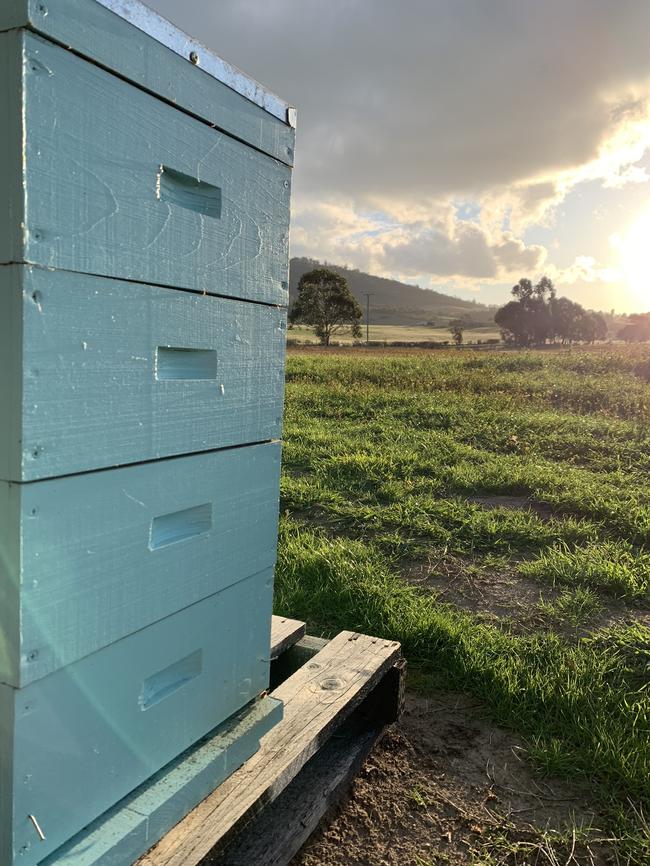
There was also a farm-gate value of $542,249 for other bee products including wax, nucleus hives, honeycomb, queens and package bees, up 16 per cent from 2018-19.
Meanwhile 10,244 hives were supplied for pollination services, with $2m in pollination services provided.
The survey recorded a total value of $15.3m for honey, bee products and pollination services for the Tasmanian beekeeping industry in 2020-21, up 59 per cent from 2018-19.
Newton believes that the rising popularity of beekeeping on social media has helped drive the popularity of the pastime, especially among the younger generation, with celebrities including David Beckham, Morgan Freeman, Scarlett Johansson, Ed Sheeran, Jeremy Clarkson, Jennifer Garner and Beyonce among those extolling the virtues of keeping bees to their millions of followers.
The arrival of the Covid pandemic – and the resulting lockdowns and restrictions – also prompted people to take up the hobby, while a growing interest in environmental issues and concerns regarding food security have also contributed to the increase.
When Newton took up beekeeping as a teenager, it was a rare hobby.
He says beekeeping took a back seat when he studied medicine and started working as a GP, but he always maintained an interest in bees and returned to beekeeping more seriously 30 years ago, now keeping about 30 hives.
Until the varroa mite arrived in Australia, many Tasmanian beekeepers imported high-quality queen bees from interstate – paying up to $400 for a single queen bee.
But with this practice now banned, to stop the mite being introduced to Tasmania, Newton and other queen bee breeders in the state have been in hot demand.
It’s a specialised pursuit – he estimates there are only about half a dozen queen breeders in Tasmania’s south – and he sold about 50 queens last year.
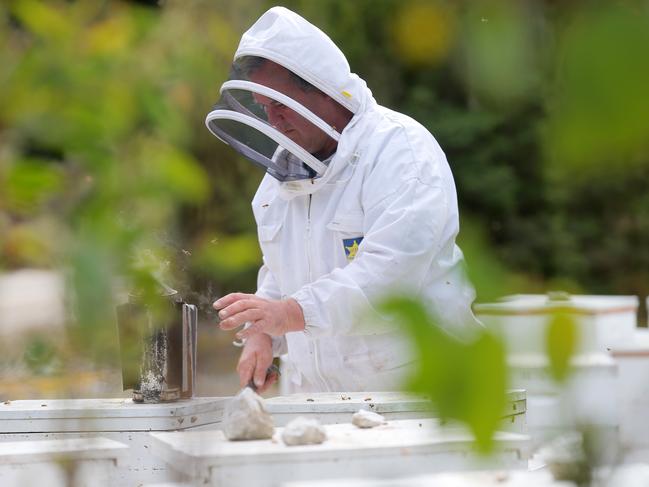
Newton says he starts the process by selecting a good queen that is gentle and has good productivity characteristics.
“A good queen will lay 1000 eggs every day,’’ he says.
Three days after eggs have been laid, Newton picks up the larvae that hatches from the eggs.
The larvae will then be transferred into specialist hives in an attempt to raise virgin queens.
Each hive produces about 20 virgin queens on average, and after five or six weeks – once these virgin queens have gone on mating flights (and are each put into their own smaller nucleus hive with about 1000 bees) – Newton eventually ends up with 20 new laying queens, which he can sell to other beekeepers or use for his own hives.
Queens live for up to five years, but typically need to be replaced every two years as they stop producing as many eggs. Meanwhile worker and drone bees have much shorter lifespans, living for only a few short weeks or months over summer. An average hive has about 20,000-40,000 bees, but only one queen.
Bee breeding will be taken a step further later this year when internationally-renowned expert
Jody Gerdts visits the state, in November, to teach Tasmanian beekeepers the art of artificial insemination.
The apiarist and bee scientist, who is a fourth generation bee keeper, hails from the US but is now based in Victoria where she runs Bee Scientifics, an Australian-based company that specialises in honey bee breeding, nutrition, beekeeper education and research.
The technique involves taking selected virgin queens and artificially inseminating them with semen taken from drone bees in other parts of the world.
The frozen semen must pass strict biosecurity protocols, and will allow breeding for a stronger and more diverse genetic pool.
The highly-skilled technique requires carbon dioxide to anaesthetise the virgin bees, and a microscope to successfully complete the insemination.
While internationally-renowned bee experts are being attracted to Tasmania, Tasmania’s bee experts are also in demand internationally.
South Arm beekeeper, educator and consultant Jenni McLeod, who runs The Bee Collective, recently returned from the US, where she spoke about beekeeping and Tasmania’s honey at the Hive Life conference in Tennessee.
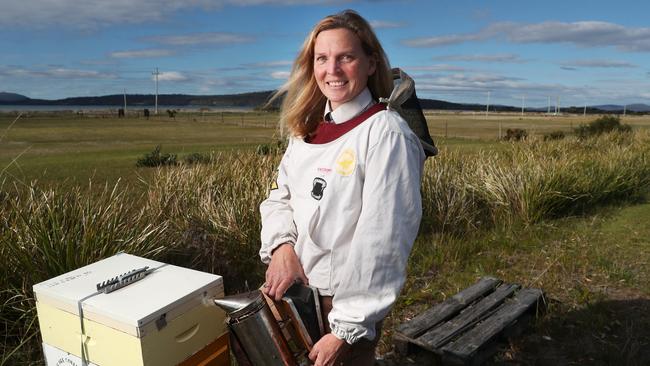
McLeod loaded up her suitcase with jars of leatherwood honey, which was in such high demand internationally that she was able to sell it for $75 a jar.
The 51-year-old believes that honey tourism is an area that should be given more focus in Tasmania as demand is there, with our clean, green reputation, fresh air and chemical-free leatherwood honey collected from a wilderness environment a drawcard for tourists.
She says Tasmania’s manuka honey is also highly sought-after.
“Tasmanian honey is beautiful and it’s actually world-renowned,” McLeod says.
“The Tasmanian brand is recognised. And the distinctive floral characters of leatherwood honey are like nothing else in the world. There’s something so unique about what we have here – people recognise it, they know what we have, and they want it.’’

She believes there should be more paddock-to-plate type experiences, where people could visit hives, see the bees in action and then enjoy a honey sommelier tasting session.
McLeod says people are hungry to learn more about beekeeping, which is evident from the demand for her Bee Queens program for female beekeepers.
She says a rise in bee tourism would make it even more important that the varroa mite is kept out of Tasmania.
McLeod was part of the emergency response team that attempted to eradicate varroa mite interstate, and says it was “heartbreaking” to see the “mass extermination of hives” which involved “pouring petrol down hives and watching bees die”, effectively ending many people’s businesses.
She has also played a role in educating beekeepers – in Tasmania and interstate – about the mite and the importance of remaining vigilant.
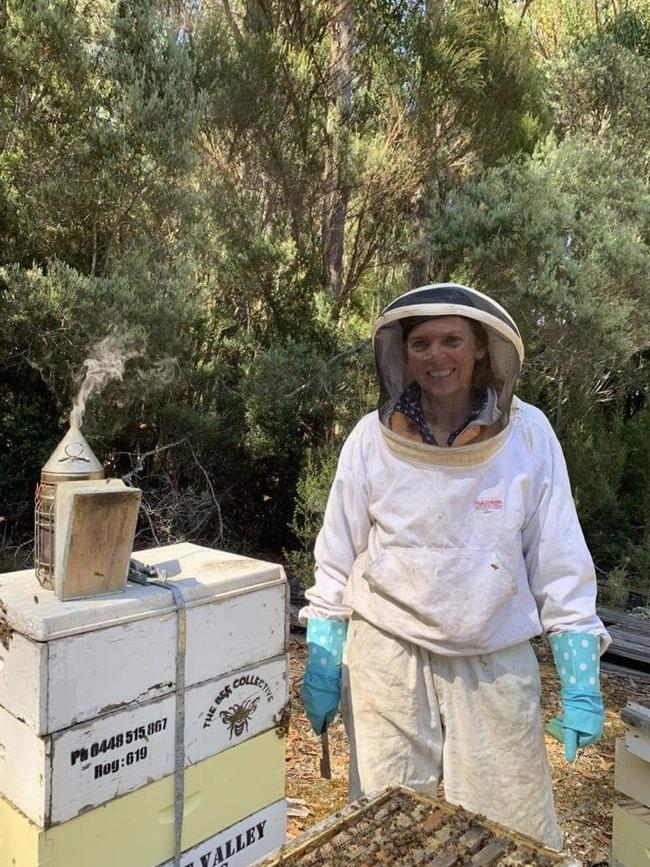

McLeod is passionate about bees and encourages people to be “bee protectors”, by not using chemicals or pesticides, and by choosing plants for their gardens that flower at different times of the year so that bees will always have food. Even a few potted plants on an inner-city balcony or rooftop can be beneficial to bees.
More than 20 years ago – in the days before we had modern technology at our fingertips – McLeod picked up the weighty Tasmanian phonebook and began flipping through the listings for beekeepers.
She rang each of the listed beekeepers until she found one, Maurice Lawrence of Derwent Valley Apiaries, who was prepared to mentor her.
McLeod spent three years working with him to complete an informal beekeeping apprenticeship and he is still her friend and mentor today, in his mid-80s.
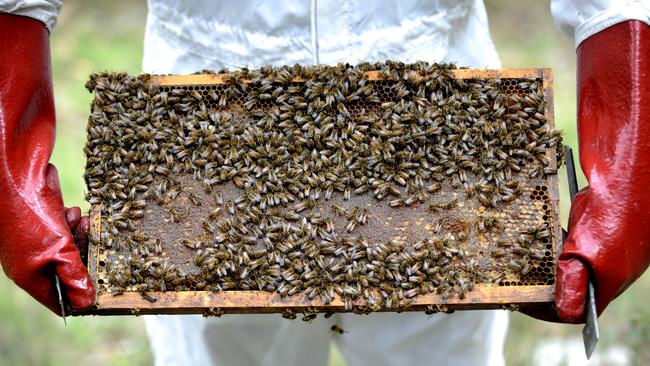
“I’ve always had a passion for the natural world and bees, for me, they’re an extension of that,’’ McLeod explains. “They connect us to everything … I’ve always found them extraordinary.’’
She finds everything about bees fascinating, from their life cycle and how a bee colony grows, to their importance when it comes to food security.
“Bees are the silent economic drivers of our world,’’ she says.
“People don’t always see them, but they provide way more than just honey.
“Ninety per cent of the crops we eat are pollinated by bees.’’
She believes greater awareness of climate change, combined with the rising cost of living, is driving people to become more self-sufficient – and keeping bees is part of that. Some are wanting to produce honey, while others are wanting bees to pollinate their vegetable gardens.
And for some people, it’s more of an act of meditation.
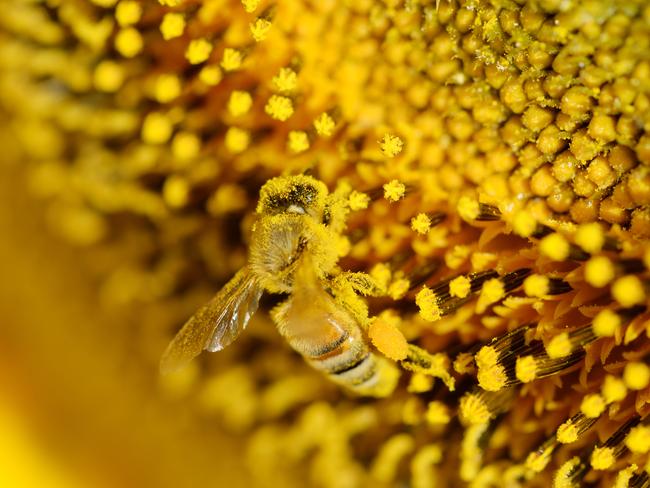
“Bees are magical – I just think bees are the most magical creatures,’’ McLeod says.
“There’s something about bees that makes you very present. We live in a very busy modern world, but bees bring you back into yourself, back into a flow state. The pace is bee pace, you can’t go fast, they will tell you – the power they have over you, it is amazing.”
McLeod says this time of year can be challenging for bees in Tasmania – spring began with a few warm days and plants began to flower, prompting bees to come out of their hives and start collecting pollen. That pollen signals to the queen that it’s time to start laying eggs. But we’ve since endured a lengthy period of cold and wet weather – bees don’t like venturing out in bad weather because they can’t forage successfully, so they stay in the hive. But then the developing eggs hatch and you end up with large bee colonies in a hive with limited food, which can result in bees starving to death.

McLeod is excited to be sharing her knowledge about bees as a guest speaker at next weekend’s Nubeena Bee Festival.
“I was part of it last year and it was amazing,’’ she says.
“Any opportunity I can get to talk to people about bees is an opportunity that can’t be missed.
“I love to see that joy in people’s faces when they learn something new about bees.’’
The Nubeena Bee Festival was held for the first time last year and was so successful that organisers have expanded the event this year.
Sylvia Dunn and some other local women had been looking for ways to entice visitors to spend more time exploring the Tasman Peninsula and supporting local businesses.
“We were trying to think of ways to encourage people to move around the peninsula instead of making a beeline to Port Arthur and out again,’’ says Dunn, who is aged in her 60s.
They came up with the idea of a bee festival – partly as a play on the town’s name of Nu-bee-na and also as a nod to the region’s beekeeping and farming heritage. The idea attracted strong community support.
The festival brings together guest speakers as well as a range of stalls showcasing bee and honey-related products – including arts, crafts, baked goods, preserves, beeswax candles, jewellery, soap, wine and plants, among other offerings – on Saturday, October 5, while food vans will present menus that feature honey in some way, whether that’s honey prawns or a salad with honey mustard dressing.
In addition to Bob Newton and Jenni McLeod, speakers will also include Mick Palmer from Tas Pollination Services, former Mercury columnist and ABC TV Gardening Australia host Tino Carnevale, Ian Kingston from Tasman Honey, Anita Long from Junior Tasmanian Beekeepers Association, and a representative from Biosecurity Tasmania.
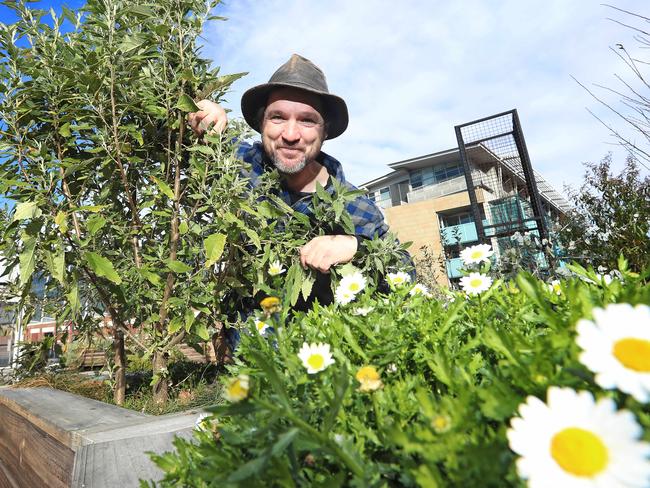
Despite minimal advertising, about 1000 people attended last year’s event at Tasman Civic Centre – “there was a real buzz in the community afterwards,’’ Dunn says – and this year’s event is expected to be bigger and better.
There’s also a bee-themed gala ball for 150 people on Friday, October 4.
Dunn says the festival is great for people who are just starting on their beekeeping journey to learn more, or for experienced beekeepers to deepen their knowledge. It’s also an opportunity for people who don’t keep bees to appreciate the wonder of bees and the unsung work they do in Tasmanian gardens and on farms.
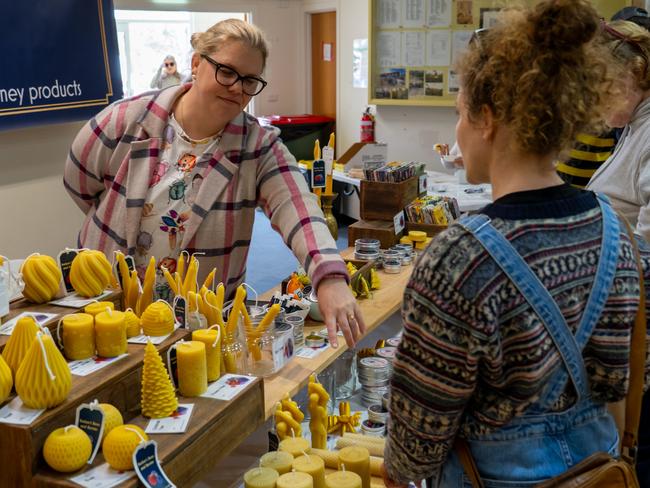
She says there are a lot of people keeping bees in the Tasman region and the festival has sparked new interest among the wider community.
Dunn says the festival, which is hosted by the Rotary Club of Tasman Peninsula, has also been a great way to bring the community together and celebrate the area’s apple and pear orchards and other properties that rely on bees.
“It does bring to the fore what’s important to people,’’ Dunn says.
“The environment is very important to people down here on the Tasman Peninsula and bees are very important in that environment.

“We were trying to think of something that was pertinent in the whole community, and bees are something everyone could relate to in some way, shape or form.’’ •
The Nubeena Bee Festival kicks off with a gala ball on Friday, October 4, followed by a day of bee-related speakers, stalls, activities and food vans on Saturday, October 5, at Tasman Civic Centre from 10am-3pm. Entry is free but a gold coin donation to Rotary is encouraged to support community projects. nubeenabeefestival.org

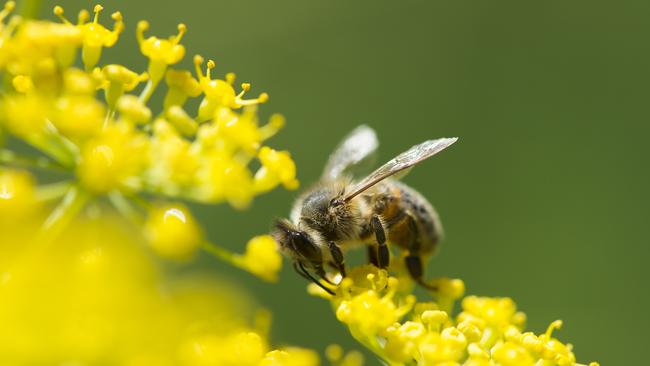
Add your comment to this story
To join the conversation, please log in. Don't have an account? Register
Join the conversation, you are commenting as Logout
It’ll be a vine day for a tomato: Thousands to flock to annual sale
Walk, don’t run. The seriously popular Royal Tasmanian Botanical Gardens tomato sale is near. Here’s everything keen gardeners need to know.
Bus services axed after another spate of rock-throwing attacks
Bus services to some northern suburbs have been axed once again after another spate of rock-throwing incidents. The latest.